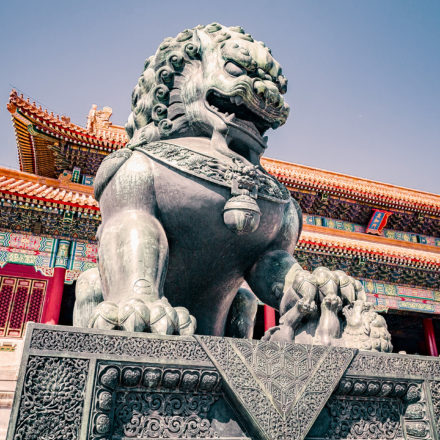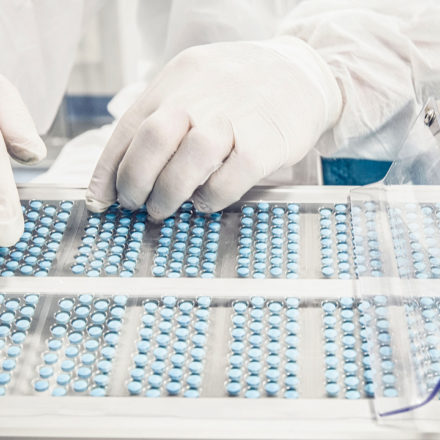Five years after it was established by the Supreme People’s Court, the IP Tribunal has released its top ten influential decisions to date.
From decisions awarding landmark sums for patent breaches, to novel global resolutions of long-standing disputes, the cases reinforce an environment that not only values but vigorously defends the rights of creators and inventors. This includes matters involving foreign businesses alleging IP infringements.
China is increasingly becoming a reliable jurisdiction for resolving high-stakes IP disputes, instilling trust among businesses worldwide and fostering a fair competitive marketplace. This allows for increased predictability and security for foreign investors and innovators relative to intellectual property in China.
The cases and the court’s celebration of them signal a proactive judiciary adapting to new competitive environment.
For businesses, it is not only a cautionary tale about safeguarding proprietary information, but a promise of robust remedies.
China’s judicial system is sending a clear message: infringement will be met with strict penalties, offering a layer of security for businesses to invest and innovate confidently.
Our IP experts in Chinese Mainland are helping market participants to navigate the young landscape and closely watching developments.
- Record-breaking 658 million RMB awarded for melamine patent breach (2020)
In a case signifying a new dawn for patent and trade secret safeguards, Sichuan Jin and Beijing Ye received an unprecedented 658 million RMB in compensation.
What happened?
- Two companies, Sichuan Jin (a Sino-foreign joint venture) and Beijing Ye (a high-tech private enterprise), accused Shandong Hua (a listed chemicals company with a state-owned capital background) and others of infringing on a melamine production patent and trade secrets they owned.
- The invention patent was for “an energy-saving and resource-saving system for the production of melamine by using the method of gas phase quenching and the process”. Sichuan Jin also held a trade secret relating to the melamine production using the pressurized gas phase quenching method with an annual output of 50,000 tons.
- The court of first instance ruled that defendant’s infringements were established, and they should stop part of the claimed infringing acts and pay damages compensation for them,but did not agree to all their damages compensation claims.
On appeal to the Supreme People’s Court, supporting all claims of the right holders, ordering the infringers to jointly and severally compensate for economic losses and reasonable expenses, 218 million yuan in total, and ordering Shandong Hua to destroy the production system and relevant technical secret carriers and stop selling melamine products obtained by using relevant technical secret. After judgment, the parties reached a comprehensive settlement on the effective judgments of the two cases and new lawsuits regarding the subsequent phases of the project and the newly added second phase of the project and the rights holders were finally compensated with the amount of RMB 658 million. Shandong Hua secured a lawful contract to use the melamine production technology.
What does it mean?
The judgments and the comprehensive settlement sent a clear signal about China’s commitment to enforcing intellectual property law impartially and equally, achieving a win-win effect of protecting intellectual property rights.
- Victory for agricultural innovation: crackdown on rice seed rights infringement (2021)
A court ruling enforced rigorous penalties against the unauthorised sale of proprietary rice seeds, strengthening protections for agricultural intellectual property.
What happened?
- Jiangsu Jin Seed Company discovered Jiangsu Qin Agriculture Company was facilitating the trade of “Jinjing 818” rice variety seeds without proper rights or permissions.
- Jiangsu Qin posted trade information in a WeChat group, collecting fees and dealing with trade aspects like price, quantity, and delivery.
- Jiangsu Jin sought to hold Jiangsu Qin accountable, alleging an infringement on their new plant variety rights and demanding legal injunction and compensation of 3 million RMB.
- The court of first instance found Jiangsu Qin culpable of assisting in rights infringement and agreed to the punitive damages Jiangsu Jin sought.
- Jiangsu Qin appealed, arguing it didn’t infringe on rights as it believed its action fell under “farmers’ self-propagation and self-use” — an exception in the Seed s Law allowing farmers to use proprietary seeds for personal agriculture without penalty.
- The Supreme People’s Court ruled that Jiangsu Qin’s scale of operations excluded them from the “farmers’ self-use” defence. It directly carried out infringing sales acts rather than assisting infringement, its behaviour demonstrated deliberate infringement carrying significant profits, surpassing 1 million RMB.
- Emphasizing severity, including adopting deceptive practices, refusal to turn over financial records and others, the court imposed the harshest possible punitive compensation of 3 million RMB.
What does it mean?
This precedent-setting case has been heralded as a prominent strike against intellectual property infringement in China’s seed market. The court held Jiangsu Qin responsible at the highest compensation level to deter imitative misconduct.
- French company prevails in landmark ‘Automobile Wiper’ patent infringement case (2019)
A pivotal court ruling upheld a French firm’s patent rights against a Xiamen company, underlining China’s move to strengthen legal protection for intellectual property.
This seminal case marked two firsts; not only was it the inaugural case tackled by the Supreme People’s Court’s Intellectual Property Tribunal but also the initiation of the Tribunal’s execution of its judicial responsibilities. The veracious stand taken here steers future jurisprudence, insisting on the just restraint of patent transgressions and emphasising swift remedies.
What happened?
- A French firm holds a patent for a “Motor vehicle windscreen wiper and related connection device.”
- The company alleged that a Xiamen-based firm’s creation and selling of similar wipers infringed upon this patent.
- The French company demanded the cessation of the infringement and compensation of 6 million RMB.
- The French company filed an application for an interim injunction, requesting a ruling to order Xiamen Company and others to immediately stop the infringement. Despite confirming infringement and mandating to stop these actions, the court of first instance did not address the French company’s application for interim injunction.
- The Xiamen Company appealed, while the French firm insisted on its application for an interim injunction.
- The Supreme People’s Court conducted a thorough public hearing, ruling within 40 days to:
- Rectify the determination of functional features in the original decision.
- Maintain the decision against the Xiamen company ─ rejecting the appeal.
- Clearly express that an interim injunction can be raised during the litigation.
What does it mean?
The landmark judgment laid down principles for clarifying the criteria for identifying functional features to avoid unduly narrowing patent safeguard spans. Efficiently, it champions a judicial paradigm blending preliminary judgment with an interim injunction orders, an approach ensuring patent holders secure their market position while upholding judicial orders—against “winning the lawsuit but losing in the marketplace”.
This illustrates the Supreme People’s Court’s commitment to leading with informed, well-timed responses to claim rightful inventor compensation and enforce patent protections with urgency. The case is guiding policy by highlighting innovations meriting sincere protection while advancing procedurally towards “legal relief in real time”.
- Traditional Chinese medicine dispensing machine patent vindicated (2021)
In a ruling that emphasised the country’s dedication to safeguarding medical technology innovation, the IP Tribunal reinstated an invention patent for a valuable Traditional Chinese Medicine dispensing machine.
What happened?
- Sichuan Pharmaceutical Company owned a patent for Medicine automatic packaging and metering device.
- Guangdong Pharmaceutical Company challenged this patent’s validity before the China National Intellectual Property Administration (CNIPA), contending that the patent lacked originality.
- CNIPA agreed with Guangdong and ruled the patent should be considered invalid due to non-inventiveness.
- Sichuan filed a lawsuit but lost before the Beijing Intellectual Property Court.
- Sichuan appealed to the Supreme People’s Court, which found prior art did not provide relevant technical motivation. It confirmed the innovation had the requisite inventive step to justify patent protection and directed CNIPA to reconsider and make a new decision.
What does it mean?
This underscores how China’s highest court supports proprietary technological strides, especially significant medical automation enhancements.
- Landmark ruling in China’s first drug patent linkage case (2022)
The country’s inaugural case of pharmaceutical patent linkage set a precedent for how patents are assessed in drug approval procedures.
This decision is pivotal for pharmaceutical companies as it clarifies how China will handle disputes over drug patents, potentially impacting strategies for patent holders and generic drug producers. The case has attracted significant attention domestically and internationally, indicating China’s growing role in shaping the legal landscape for pharmaceutical patents.
What happened?
- A Japanese company, holding a patent for ‘ED-71 Preparation’, disputed whether Wenzhou Pharmaceutical Company’s generic drug fell under its patent’s protection.
- The Japanese company took the case to the Beijing Intellectual Property Court, invoking Article 76.1 of the Patent Law.
- The lower court did not rule in favour of the Japanese company.
- On appeal, the Supreme People’s Court decided that the generic drug’s technical solution did not infringe upon the Japanese company’s patent, upholding the first-instance judgment.
What does it mean?
The case shows that China’s legal system is actively developing its approach to pharmaceutical patent linkage, which aligns the approval of generic drugs with patent rights.
Wenzhou faced criticism from the court for not providing a timely and detailed statement on its drug’s technical solution. This underlines the importance of providing complete and prompt disclosures about drugs during the patent linkage process.
Given the complexities of patent law and the pharmaceutical industry, this case serves as a guiding example for companies navigating patent protections within the drug approval process in China.
- Record 159 million RMB in technical secret infringement case (2020)
In a landmark ruling for business-related intellectual property rights, China’s Supreme People’s Court issued a historic compensation order, emphasising stringent penalties for the infringement of technical secrets.
This case acts as a guiding light for IP protection, offering reassurance that the judicial system is prepared to penalise malicious infringements heavily.
What happened?
- Jiaxing and Shanghai companies owned a technical secret on how to produce vanillin, a flavouring agent, making Jiaxing the largest global manufacturer with a 60% market share.
- Ningbo company, through a former Jiaxing employee, obtained this secret and began large-scale production, which hurt Jiaxing’s market share and dropped vanillin prices.
- Jiaxing and Shanghai companies sued Ningbo for infringement, winning a first-instance court ruling ordering Ningbo to stop the infringement and pay 3.5 million RMB.
- Despite this ruling, Ningbo continued its operations.
- Both sides were dissatisfied with the initial judgement and appealed.
- The Supreme People’s Court found that Ningbo’s legal representative was directly engaged in the infringement, establishing a company for this purpose.
- The legal representative and Ningbo and others committed joint infringement and should bear joint and several compensation liability.
- The court increased the compensation to 159 million RMB, accounting for the significant value of the technical secret and the egregious nature of the infringement.
What does it mean?
This case sets a precedent for handling the severe repercussions of stealing and exploiting technical secrets. The judgment demonstrates China’s commitment to protecting companies’ core technologies and reinforces the consequences of deliberate and harmful intellectual property violations. This includes the legal responsibility of individuals who directly participate in such infringements, including the potential for joint liability with the infringing company.
The transfer of suspected criminal evidence to law enforcement also illustrates the link between civil compensation and criminal accountability.
- ‘Rubber antioxidant’ trade secret case results in over 200 million RMB (2022)
In its historic ruling, the court showed its readiness to impose maximum judicial penalties on those who defy court orders. It also signalled its willingness to enforce strong protections for trade secrets – especially when infringement continues after a court order.
What happened?
- Sheng holds technical secrets for creating a substance (RT base) used in making rubber antioxidants.
- Sheng accused Chen, the head of the now-bankrupt Shanxi, of directing employees to steal this secret and use it to set up similar production with a new company, Yuncheng.
- Despite Shanxi’s bankruptcy and criminal charges for trade secret theft, the infringement continued through Yuncheng.
- Sheng sued Chen and Yuncheng, demanding infringement cessation, equipment destruction and over 200 million RMB in compensation.
- The first court agreed with Sheng and ordered the infringement stopped. However, Yuncheng did not comply.
- On appeal, the Supreme People’s Court kept the infringement stop and compensation but sent back the decision on equipment destruction to the lower court and required the third party who claimed it was the owner of the production equipment involved to participate in the litigation.
- Companies and their actual controllers who refuse to comply with interim injunction rendered by the court of first instance will be subject to maximum judicial penalties.
What does it mean?
The case sets a precedent for the value of technical secrets and the potential financial and legal consequences of stealing proprietary information.
The separation of issues in the second-instance ruling, affirming compensation but remanding equipment destruction, shows the people’s court’s determination to resolutely protect intellectual property rights.
- Punitive damages in hand sanitiser trade secret case (2019)
In a decision applying punitive damages, the Supreme People’s Court warned against the theft and unauthorised use of proprietary information. The ruling provides clarity on linking the severity of infringement to the level of punitive damages, offering a formula for future cases.
What happened?
- Guangzhou and Jiujiang held trade secrets for making Carbomer, a vital material in hand sanitizers.
- An employee, Hua, at Guangzhou, stole technical data and shared it with Anhui and others, which produced and sold Carbomer globally.
- The court ruled this action as a technical secret infringement and initially set compensation based on 2.5 times the illicit profits, amounting to 30 million RMB.
- Upon appeal, acknowledging Anhui’s intentional and widespread and continuous infringement, the Supreme People’s Court applied the maximum punitive damages, that is, 5 times the illegal profits.
- The final judgment required Anhui to pay 30 million RMB, with certain individuals bearing joint responsibility for varying amounts.
What does it mean?
This case illustrates the judiciary’s firm stance on trade secret violations and explores corresponding relation between the severity of infringement circumstances and the times of punitive damages, potentially increasing the financial risk for infringers.
- Compensation denied for anti-competitive behaviour – ‘Brick and Tile Association’ monopoly case (2020)
In a defining judgment, the Supreme People’s Court clarified that participants in monopoly agreements cannot claim losses stemming from their own anti-competitive actions. Engaging in monopolistic behaviour can disqualify businesses from legal protections normally granted for economic losses.
What happened?
- The Brick and Tile Association of a city signed contracts that restricted production, creating a monopoly by reducing supply and increasing prices.
- Zhang, who ran one of the businesses that stopped production, sued the Association for not paying the agreed ‘production suspension compensation’, asserting this caused him economic losses.
- The initial court sided with Zhang’s demand for compensation.
- On appeal, the Supreme People’s Court found that Zhang willingly joined the monopolistic contract and helped implement it.
- The court reversed the initial ruling and dismissed the case, deciding that Zhang’s claims for economic losses were essentially a bid to share the monopoly profits, which is illegal.
What does it mean?
This ruling reinforces that participants in anti-competitive practices cannot later claim damages for the consequences of those practices. It highlights the intent to punish horizontal monopoly behaviours, which are agreements between competitors to control prices or production, and to maintain fair competition.
- Global resolution in ‘cordless vacuum cleaner’ patent dispute (2022)
The Supreme People’s Court of China played a crucial role in facilitating a comprehensive worldwide settlement between two industry giants over an invention patent, demonstrating the effectiveness of judicial mediation in resolving international intellectual property conflicts.
This shows that courts can effectively aid in creating a stable, law-based and international business environment. For businesses, this serves as a reminder of the value of negotiation and the possibility of achieving comprehensive settlements through open communication, even in complex international cases.
What happened?
- A British company accused Suzhou of infringing its patent for a cordless vacuum cleaner design.
- The British company sued, demanding that Suzhou halt infringement and compensate it 1 million RMB.
- The claims were dismissed in the first court.
- On appeal, the Supreme People’s Court stepped in with a dialogue platform, aiming to de-escalate the conflict, recognising the longstanding intellectual property disputes between the two.
- The approach led to a global settlement of over 20 intellectual property disputes between the two parties.
What does it mean?
This case exemplifies the potential for judicial systems to go beyond traditional verdicts and actively facilitate dispute resolutions that extend across borders.
It reflects a shift towards a judicial philosophy centred on proactive resolution and mutual benefit, coined the ‘Eastern experience’.
The Supreme People’s Court’s involvement illustrates how mediation can lead to constructive outcomes that satisfy both parties, fostering goodwill and potentially saving considerable time and resources that prolonged litigation would entail.
To read about the cases in full, see IP Tribunal’s press release.








